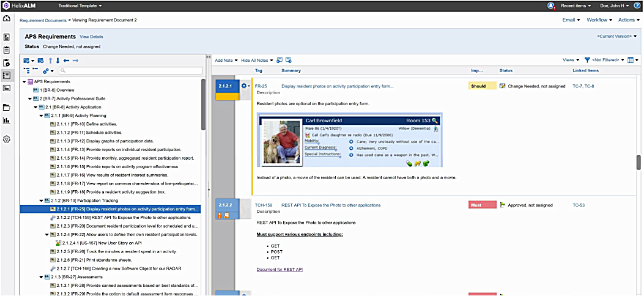Blog
December 18, 2019
How to Assess Requirements Management Plan Effectiveness
Application Lifecycle Management,
Security & Compliance
A requirements management plan is about more than identifying requirements. To manage product requirements, you need a requirements document. It links each requirement to the actions, changes, and artifacts related to it. This can include things like testing, defects, analysis, prioritization, and communication.
Some companies can get by using Microsoft Excel, Microsoft Word, or even Jira to track everything. But changes happen over time.
The complexity of most software products doubles every 2–3 years. Team sizes can grow — both in size and distance. And what starts out as an already complex matrix of relationships becomes even bigger.
These changes can render a once successful requirements management plan inefficient.
10 Signs Common Signs of an Outdated Requirements Management Plan
How do you know if it’s time to consider changes to your requirements management plan? From our experience, project managers and development teams see 10 common red flags when their plan needs an upgrade.
1. You have incorrect document versions because you have to manually merge changes.
If you use Word or Excel to manage your requirements, only one person can work on that document at a time. Consequently, comments, updates, and changes don’t always make it onto the official document. This can measurably slow your process and lead to expensive mistakes.
2. You don’t know who has the latest version of the requirements document.
Or perhaps you know it’s on the project manager’s hard drive, but they're in a meeting. (Even worse, they're on vacation.) Again, if you have to track down or wait for a requirements document to become available, you’re wasting valuable time.
3. It takes days or weeks to review documents.
And status updates seem impossible because you can’t tell what changed since the last time you read the document. Without a reliable, authenticatable change history, it can feel like all you do is review documents some days.
4. Customers and stakeholders complain that the finished product isn’t what they wanted.
It seems they didn’t even read the requirements! But what’s more likely is that a requirement change wasn’t communicated to the team. Consequently, the team didn’t know what requirements needed to be delivered and when. This can be especially devastating if it makes you lose revenue and the stakeholders’ confidence in the team.
5. The customer is finding bugs that exist because the testers had old information about feature functionality.
It’s bad enough to release a product with bugs, but your testers don’t have a fair chance if they don’t have the most recent requirement definitions. Not only does this make your team appear unprofessional, the incorrect work costs time and money.
6. The development team implemented a lower-priority feature instead of a higher-priority feature.
And now the release date is slipping because there’s not enough time to implement the must-have features. Without a centralized document, the team is vulnerable to mistakes that are very easy to avoid.
7. Traceability is a pipe dream.
It’s extremely time consuming to manually generate traceability. Then again, without it, you can’t show the life of a requirement. Or manage impact changes. Traceability is an essential activity in requirements management. But to manually create trace matrices takes so much time it can prevent you from getting your product to market on schedule
8. Questions, stakeholder comments, and key requirement updates are stuck in someone’s inbox.
You write emails to clarify how things should work, but these details don’t seem to make it into the requirements. Lost collaboration bleeds inefficiencies into your process, contributing to many of the symptoms we’ve described thus far.
9. You can’t track information related to a requirement because it’s a video.
Requirements are more than words. Related information can include things like diagrams, images, and presentations. Without a tool to link these to your requirements, you can lose track of important artifacts.
10. A requirements status update takes all day.
Data gathering and reporting are hefty processes for a complex project. Of course they take time. But consider this: if you have a modern requirements management tool, you can get the latest status at anytime from anywhere in a few clicks.
All in all, these inefficiencies can lead to missed deadlines, blown budgets, poor quality, unmet customer expectations, lost reputations, and low morale. But you can fix it.
 Back to top
Back to top
How to Have a More Efficient Requirements Management Plan
The underlying problem in all of these scenarios is that your manual process creates more problems than solutions. Modern requirements management tools save time, eliminate stress, and reduce risk by helping you:
- Centralize, organize, and prioritize requirements data
- Facilitate collaboration
- Control change
- Provide end-to-end traceability
- Automate your workflows
- Protect sensitive information
- Generate detailed reports
The right solution for you will support and simplify your existing process and reduce your risk of project failure. It will empower you to perform team-based collaboration, control change, provide traceability, automate workflows, and better manage other critical aspects of your process.
Back to top
Managing Requirements Efficiently — For Free
Perforce ALM solves all the issues outlined above, and it integrates with Jira. You can try it free for 30 days. Decide for yourself whether your team works more efficiently with Perforce ALM.

